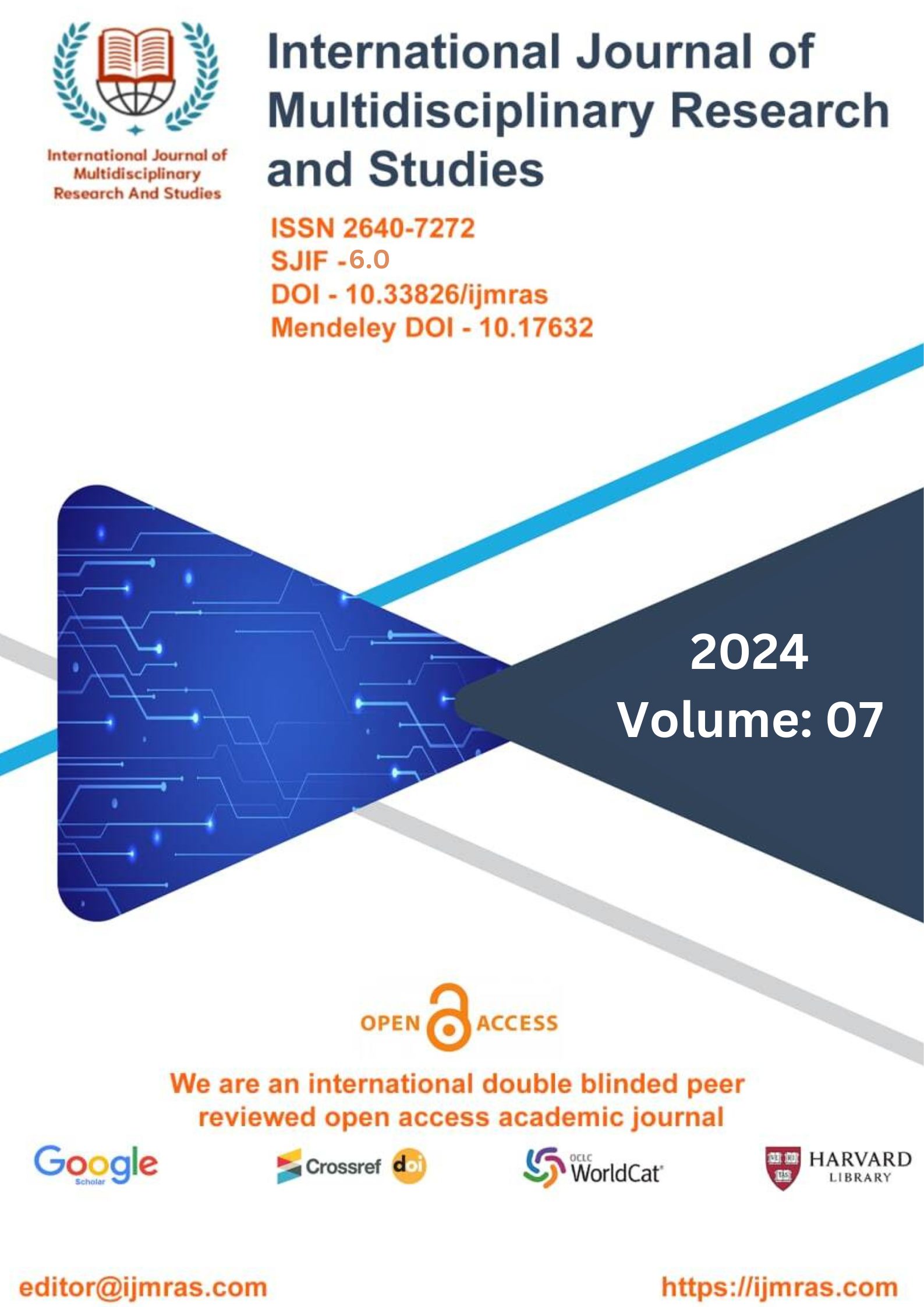The Internet Autonomous System's implementation Categorization of Internet Autonomous Systems' Topology

Abstract
Although the Internet has been researched since its inception, academics didn't start paying much attention to its growth and change until the mid-1990s, when it became economically viable in the United States. To begin with, it was Govindan and Reddy [16] who originally defined an AS-level graph. The graph was shown as a set of nodes and linkages, with the nodes representing individual Internet domains. They found that even though the Internet has expanded greatly, the degree and route dispersion have not changed from pre-boom levels. However, in their seminal study [17], Faloutsos et al. introduced the term Internet topology. If the data from the BGP monitor was trustworthy and thorough enough, the researchers concluded that it allowed for the first full look at the AS topology. What they observed was that the distribution of AS degrees followed a simple power formula. Academic interest in Internet topology and data collection methods, graph construction, and graph approaches and analysis has increased since the publication of this influential study [18].
Keywords
RIS, PCH, AS, BGPHow to Cite
References
D. Achlioptas, A. Clauset, D. Kempe, and C. Moore. On the bias of tracer- oute sampling. In STOC, ACM, volume 1581139608, page 0005. Citeseer, 2005.
M. B. Akgun and M. H. Gunes. Bipartite internet topology at the subnet- level. In Network Science Workshop (NSW), 2013 IEEE 2nd, pages 94–97. IEEE, 2013.
R. Albert and A.-L. Barab´asi. Topology of evolving networks: local events and universality. Physical review letters, 85(24):5234, 2000.
J. I. Alvarez-Hamelin, L. Dall’Asta, A. Barrat, and A. Vespignani. k-core de- composition of internet graphs: hierarchies, self-similarity and measurement biases. arXiv preprint cs/0511007, 2005.
B. Augustin, B. Krishnamurthy, and W. Willinger. Ixps: mapped? In Proceedings of the 9th ACM SIGCOMM conference on Internet measurement conference, pages 336–349. ACM, 2009.
A.-L. Barab´asi and R. Albert. Emergence of scaling in random networks.
science, 286(5439):509–512, 1999.
A. Baumann and B. Fabian. Who runs the internet?-classifying autonomous systems into industries. In WEBIST (1), pages 361–368, 2014.
M. Baur, U. Brandes, M. Gaertler, and D. Wagner. Drawing the as graph in
5 dimensions. In Graph Drawing, pages 43–48. Springer, 2005.
K. Boitmanis, U. Brandes, and C. Pich. Visualizing internet evolution on the autonomous systems level. In Graph Drawing, pages 365–376. Springer, 2008.
J. Brodkin. Why YouTube buffers: The se- cret deals that make-and break-online video. http://arstechnica.com/information-technology/2013/07/why-youtube-buffers-the-secret-deals-that-make-and-break-online-video/, July 2013.
T. Bu, N. Duffield, F. L. Presti, and D. Towsley. Network tomography on general topologies. In ACM SIGMETRICS Performance Evaluation Review, 2002.
T. Bu and D. Towsley. On distinguishing between internet power law topol- ogy generators. In INFOCOM 2002. Twenty-First Annual Joint Conference of the IEEE Computer and Communications Societies. Proceedings. IEEE, volume 2, pages 638–647. IEEE, 2002.
Caida ark project. http://www.caida.org/projects/ark/.
Caida datasets. http://data.caida.org/datasets/.
Caida. Ipv4 and ipv6 as core: Visualizing ipv4 and ipv6 internet topology at a macroscopic scale in 2014. http://www.caida.org/research/topology/ as_core_network/2014/, 2014.
H. Chang, R. Govindan, S. Jamin, S. J. Shenker, and W. Willinger. Towards capturing representative as-level internet topologies. Computer Networks, 44(6):737–755, 2004.
H. Chang, S. Jamin, and W. Willinger. Internet connectivity at the as- level: an optimization-driven modeling approach. In Proceedings of the ACM SIGCOMM workshop on Models, methods and tools for reproducible network research, pages 33–46. ACM, 2003.
H. Chang, S. Jamin, and W. Willinger. To peer or not to peer: Modeling the evolution of the internets as-level topology. Ann Arbor, 1001:48109–2122, 2006.
H. Chang and W. Willinger. Difficulties measuring the internet’s as-level ecosystem. In Information Sciences and Systems, 2006 40th Annual Confer- ence on, pages 1479–1483. IEEE, 2006.
K. Chen, D. R. Choffnes, R. Potharaju, Y. Chen, F. E. Bustamante, D. Pei, and Y. Zhao. Where the sidewalk ends: Extending the internet as graph using traceroutes from p2p users. In Proceedings of the 5th international conference on Emerging networking experiments and technologies, pages 217–228. ACM, 2009.
Q. Chen, H. Chang, R. Govindan, and S. Jamin. The origin of power laws in internet topologies revisited. In INFOCOM 2002. Twenty-First Annual Joint Conference of the IEEE Computer and Communications Societies. Proceed- ings. IEEE, volume 2, pages 608–617. IEEE, 2002.
R. Cohen and D. Raz. The internet dark matter-on the missing links in the as connectivity map. In INFOCOM, 2006.
A. Dhamdhere and C. Dovrolis. Ten years in the evolution of the internet ecosystem. In Proceedings of the 8th ACM SIGCOMM conference on Internet measurement, pages 183–196. ACM, 2008.
A. Dhamdhere and C. Dovrolis. The internet is flat: modeling the transi- tion from a transit hierarchy to a peering mesh. In Proceedings of the 6th International COnference, page 21. ACM, 2010.
A. Dhamdhere and C. Dovrolis. Twelve years in the evolution of the inter- net ecosystem. IEEE/ACM Transactions on Networking (ToN), 19(5):1420– 1433, 2011.
G. Di Battista, M. Patrignani, and M. Pizzonia. Computing the types of the relationships between autonomous systems. In INFOCOM 2003. Twenty- Second Annual Joint Conference of the IEEE Computer and Communica- tions. IEEE Societies, volume 1, pages 156–165. IEEE, 2003.
X. Dimitropoulos, D. Krioukov, M. Fomenkov, B. Huffaker, Y. Hyun, G. Ri- ley, et al. As relationships: Inference and validation. ACM SIGCOMM Computer Communication Review, 37(1):29–40, 2007.
X. Dimitropoulos, D. Krioukov, G. Riley, and K. Claffy. Classifying the types of autonomous systems in the internet. SIGCOMM Poster, 151, 2005.
B. Donnet and T. Friedman. Internet topology discovery: a survey. Commu- nications Surveys & Tutorials, IEEE, 9(4):56–69, 2007.
S. N. Dorogovtsev and J. F. Mendes. Evolution of networks: From biological nets to the Internet and WWW. Oxford University Press, 2013.
N. Economides. The economics of the internet backbone. NYU, Law and Economics Research Paper, (04-033):04–23, 2005.
B. Edwards, S. Hofmeyr, G. Stelle, and S. Forrest. Internet topology over time. arXiv preprint arXiv:1202.3993, 2012.
Eu telecom’s rules. https://ec.europa.eu/digital-agenda/en/ telecoms-rules/.
License
Copyright (c) 2024 CAO YUANQING, DR. MIDHUNCHAKKARAVARTHY

This work is licensed under a Creative Commons Attribution 4.0 International License.
Individual articles are published Open Access under the Creative Commons Licence: CC-BY 4.0.




